| Recent Featured Videos and Articles | Eastern “Orthodoxy” Refuted | How To Avoid Sin | The Antichrist Identified! | What Fake Christians Get Wrong About Ephesians | Why So Many Can't Believe | “Magicians” Prove A Spiritual World Exists | Amazing Evidence For God | News Links |
| Vatican II “Catholic” Church Exposed | Steps To Convert | Outside The Church There Is No Salvation | E-Exchanges | The Holy Rosary | Padre Pio | Traditional Catholic Issues And Groups | Help Save Souls: Donate |  |
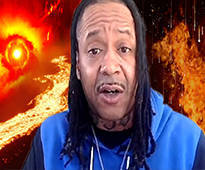
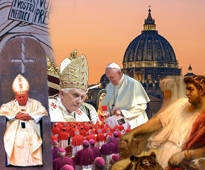
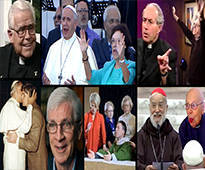
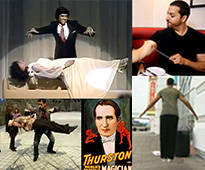
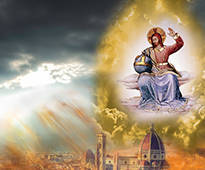

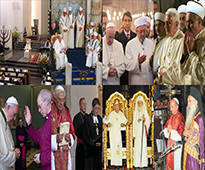


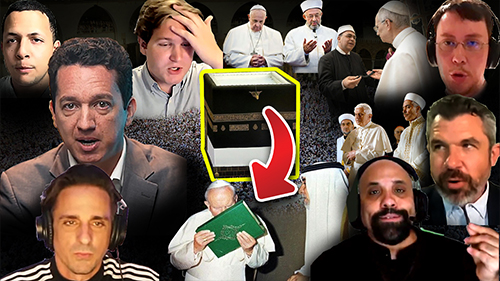 " />
" />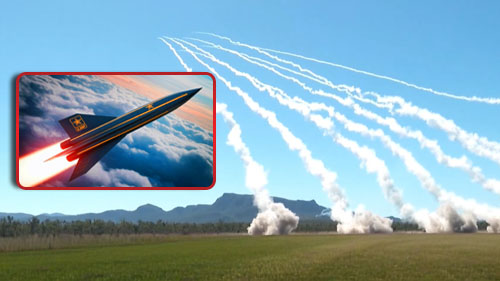 " />
" /> " />
" />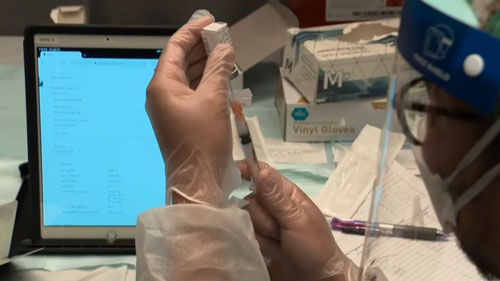 " />
" /> " />
" />




Do Animals go to Heaven?
The following article is our personal opinion on this subject. If there is a decision by the Magisterium in the future on this issue, or one from the past we have overlooked, we subject ourselves to it. Based upon papal teachings that MHFM has researched, we are not aware of any magisterial teaching on whether any animals can go to Heaven. It is our opinion that, at the very least, certain animals do go to Heaven.
In Apocalypse 19, we are given a vision of Heaven. Jesus Christ is seen on a horse and the armies of the Word of God follow Christ on horses.
The word translated as “Heaven” in many passages of the New Testament, including Apoc. 19:11, is from the Greek word ouranos. It can refer to the sky or the region in which God dwells. The context of this chapter, which speaks of God sitting on His throne (Apoc. 19:4), makes it clear that “Heaven” in this passage refers to the region in which God dwells. St. John describes the opening of God’s region, as Christ comes to Earth. Animals are said to be there, with Christ and His armies riding on horses.
One might assert that the horses on which Christ and His armies ride are simply symbolic. But would God give us a symbolic picture of animals in Heaven, if the very concept of animals in the next world is repugnant to the ultimate reality? Moreover, the supposition that these descriptions are purely symbolic is no more definitive than the position that they provide us with an actual picture of what will occur.
The early Church father St. Irenaeus (2nd century) seemed to believe that the description of Apoc. 19 constitutes an actual representation of the future reality.
The Lord Jesus Christ stated: “Are not five sparrows sold for two farthings, and not one of them is forgotten before God?” (Luke 12:6)
St. Francis Paola (1416-1507) was one of the greatest miracle workers in the history of the Catholic Church. He had a special interest in animals. He had a pet lamb and a pet fish. He raised his pet fish to life after it had been killed, cooked and smashed to pieces by another priest.
St. Francis also raised his pet lamb, Martinello, from the dead after it had been eaten by workmen.
It’s noteworthy that St. Francis Paola called the animals by their names even after their lives had ended. He apparently believed they continued to exist after their deaths.
Blessed Martin De Porres (1579-1639) was a saintly brother of the Dominican Order. He was beatified in the 19th century. He also had a special interest in animals. After a dog had been uncharitably killed by its master, Martin raised the dog from the dead. He also spoke to the dog and instructed it not to return to its ungrateful master.
In another case, rats were causing problems for a man Blessed Martin had assisted. The problem increased to the point that rats began to invade the sacristy. Martin thought the problem could be solved without killing the rats, but the man decided to set traps. After a rat was caught in one of the traps, Martin urged that it not be destroyed. Instead, Martin spoke to the rat. He told the rat that he and his companions should leave the monastery and go to the garden. To the amazement of many, the rats obeyed.
The interactions of St. Francis of Assisi with animals are well-chronicled. One of the most famous stories concerns St. Francis and the wolf. A large wolf was terrifying the people of Gubbio. The wolf devoured people and animals. Despite warnings to avoid him, St. Francis decided to approach the wolf, as many watched from a distance.
A mysterious dog also played a role in the life of St. John Bosco.
St. Paul of the Cross (d. 1775) once rebuked a farmer who uttered blasphemies in frustration at his oxen. Upset by the admonition, the farmer pointed his gun at St. Paul. “More horrified at the blasphemies than he was at his present danger, the Saint held up the crucifix he always wore around his neck and announced fearlessly, ‘Since you will not respect this crucifix, these oxen will.’ As though they understood, the oxen immediately fell to their knees.”[8] Afterwards the farmer repented.
In the life of St. Anthony of Padua (d. 1231) we read that many heretics resided at Rimini. “But they, not only consenting not to his holy words, but even, like hardened and obstinate sinners, refusing to hearken unto him, the Saint one day, by divine inspiration, went forth to the banks of the river close beside the sea; and, standing thus upon the shore betwixt sea and stream, he began to speak in the guise of a sermon in the name of God unto the fishes. ‘Hear the word of God, ye fishes of the sea and of the stream, since heretics and infidels are loathe to listen to it.’ And having uttered these words, suddenly there came toward him so great a multitude of fishes – great, small, and middle-sized – as had never been seen in that sea or in that stream… all turned their heads out of the water, and all turned attentively toward the face of Anthony.”[9]
In the life of St. Anthony of Padua, we also learn that an Albigensian heretic challenged Catholic teaching on the Eucharist. As a test, the two men agreed to allow the heretic’s mule to choose between its typical food and the Eucharist. The mule was deprived of food for three days. After three days, in the presence of a great crowd, the heretic attempted to feed the mule oats and hay, while St. Anthony held the consecrated Host before the animal. The mule ignored the food, and fell to its knees before the Blessed Sacrament. As a result, the unbelievers were thrown into great confusion and some of them were converted.[10]
Consider the following story from the Old Testament Book of Numbers, Chapter 22:21-35:
This passage tells us that an animal could see an angel and was given the ability to speak. When the angel finally appeared to Balaam, he rebuked him for beating the animal. The angel also said that he almost killed Balaam and spared the animal. Balaam had to have his eyes opened in order to see the angel, but the animal did not.
It was based on the reasoning of St. Thomas Aquinas that many Catholics came to think that animals do not possess souls that exist after their deaths. While St. Thomas’ views are always worthy of consideration, they are not infallible or definitive. In some cases, his views have been rejected by the Magisterium. St. Thomas taught that the human embryo proceeded through three stages of soul. He believed that the embryo began with the vegetative soul (anima vegetabilis , which he believed plants possess), then proceeded to the sensitive soul (anima sensitiva, which he believed animals possess), and, after 40 or 80 days, God infused the rational or intellectual soul (anima intellectiva, the human soul).
As the 1907 Catholic Encyclopedia article on “Soul” explains:
In other words, those who claim to adhere to St. Thomas’ view on animation and ensoulment must believe that an embryo begins with a plant soul; it is then replaced by an animal soul, which in turn is replaced by the infusion of the human (rational) soul 40 or 80 days after the initial formation of the embryo. St. Thomas also taught that the soul of Mary did incur the stain of original sin – an idea contradicted by later infallible teaching on the Immaculate Conception.
As an aside, while we’ve mentioned St. Thomas’ erroneous view on the Immaculate Conception in the past (and this quote in particular), it’s remarkable that many in the traditional movement, including prominent individuals and priests, after being presented with this evidence still wrongly and dishonestly insist that St. Thomas did not contradict the Immaculate Conception! To put it simply, St. Thomas’ views on the soul are not infallible.
While we are not asserting that animals possess rational or intellectual souls (or that they can experience the Beatific Vision) – these are unique to human beings, who alone are created in the image of God – we do not agree with the assertion that the souls of all animals are necessarily mortal and cannot continue after death. We believe that, at least with some animals, they have souls/spirits that can experience Heaven in a manner proper to an animal.
Anyone who has been around certain animals knows that certain animals demonstrate individuality, an ability to learn and reason, and even personalities. Two animals of the same species will have different proclivities and interests. Their mode of operation is not completely instinctive or based purely on sensory response and reaction. For example, some cats are very curious, while others are not. Some dogs like a certain activity, while others do not. St. Gregory Nazianzen said the following about animals.
In the original paradise (prior to the fall of Adam and Eve), God created the whales, the birds, and every moving creature on earth and in the sea. Having placed animals of all kinds in the original, uncursed and sinless paradise, “God saw that it was good” (Gen. 1:25).
Before Adam and Eve’s capitulation to the serpent brought sin and death into the world, God brought all beasts of the Earth and the fowls of the air to Adam so that he could name them.
When God destroyed the Earth at the time of Noah, all things “wherein there is the breath of life” died (Gen. 7:22). The same word for the souls or breath of life of animals is used to describe the soul of man, even though man’s soul is very different from that of animals.
The flood of Noah’s day is described by St. Peter as the end of the original world: “And [God] spared not the original world” (2 Peter 2:5). Yet, when God warned Noah about what he must do to successfully transition from the original world, through the flood, to the new, God also told him to bring animals into the Ark.
God wanted the animals from “the original world” to be present in the next world, and He commanded Noah to go to extraordinary lengths to make it happen.
After the flood, God established His covenant with Noah and with all the animals/creatures on Earth.
And the bow shall be in the clouds, and I shall see it, and shall remember the everlasting covenant, that was made between God and every living soul of all flesh which is upon the earth. And God said to Noe: This shall be the sign of the covenant which I have established between me and all flesh upon the earth.”
The Haydock commentary on Genesis 9:10 acknowledges that God made His covenant also with the animals.
God created animals for the original, spiritually pristine Earth. Is it unthinkable that He would have animals in the new Heaven and the new Earth at the end of time? In fact, the Apocalypse clearly portrays the Second Coming of Jesus Christ as the restoration of the original paradise on Earth.
The first Earth featured the “the tree of life… in the midst of paradise” (Genesis 2:9). The Apocalypse repeatedly tells us that Christ will restore the tree of life.
Doesn’t it seem consistent that as there were animals of various kinds in the original paradise, there will be animals in the new paradise – in the new Heaven and new Earth? In this regard we should consider a prophecy of Isaiah.
Isaiah 65 contains a prophecy about the new Heaven and the new Earth. While a similar prophecy made in Isaiah chapter 11:1-9 finds fulfillment in the coming of Christ and the establishment of the New Covenant Church, the passage in Isaiah 65 seems to have application to the end of time, the Second Coming of Christ and the Apocalypse. Numerous early Church fathers applied Isaiah 65 to the end of time, including St. Justin Martyr.
The prophecy of Isaiah 65 is relevant to this topic because it says that in the new Heaven and new Earth, “the wolves and the lambs feed together, and the lion shall eat straw like the ox; but the serpent [shall eat] earth as bread. They shall not hurt or maltreat each other on the holy mountain…”
Here are the comments of St. Justin Martyr (A.D. 100-165) on the prophecy of Isaiah 65.
We are told that in the new Heaven and the New Earth, the lion, the ox and other animals will live in harmony. Some might argue that this is a metaphor for how Christ’s elect will be comprised of people with different temperaments. Individuals of all types will have found conversion and peace with their incorporation into Christ. However, that is not certain. This passage could speak to the actual working of the future Heaven and Earth. The statement in Isaiah 65:19, that there will be no more “weeping” or “crying” in the new Heaven and Earth, closely parallels Apocalypse 21:4:
This strongly suggests that the prophecy of Isaiah 65, concerning the lion, ox, etc. has application to the new Heaven and the new Earth at the end of time. Other than the dogmas of divine revelation, which tell us how humans are to get to Heaven and which humans will be excluded, we know very little about what Heaven actually is or will be like.
In fact, in the original paradise, animals did not kill or eat each other. In God’s original design, the herbs and the trees which bear seed were the food or “meat” of both man and land creatures (Gen. 1:29-30). It was only after the sin of Adam, the changes in the Earth that resulted from the flood, the introduction of various seasons, and the consequent reduction of the tree and herb supply at various times of the year, that animals became carnivores. There is a fascinating lecture on this point by a professor of zoology. He explains that creatures we typically consider hunters and carnivores were not so from the beginning. He shows how their natural equipment is perfectly consistent with this conclusion and an original design as vegetarians.[15]
Therefore, if animals lived in peaceful harmony in the original paradise, it would make sense that they would do so in the new Heaven and the new Earth. The words of Isaiah, which foretell such a situation, would thus be consistent with a more literal understanding of the prophecy. But even if one grants that the description in Isaiah 65 is a symbol or a metaphor, one must ask once again why God would provide us with a symbol of animals in the new Heaven and new Earth if the concept is repugnant to reality.
Of course it needs to be affirmed that the worship of animals is an abominable heresy that plagued people in the Old Testament and still exists among some today. Animals are not God, and they are different from human beings. They do not possess rational souls. However, they have the special form of existence which God gave them; and it’s simply remarkable to consider the amazing abilities and characteristics they continually display. These abilities clearly disprove the assertion that animals are simply beings that function only on instinct and sensory response.
For example, there is an amazing YouTube video called, Hero Dog Tries to Help Wounded Dog – Chile.[16] It has been viewed almost two million times. In an attempt to cross a busy highway, a dog was hit by a car and left helpless in the midst of heavy oncoming traffic. A second dog some distance away spotted him. The second dog decided to venture into heavy traffic and save the wounded one. The second dog evaded oncoming cars, grabbed the wounded dog with its teeth and paws, and pulled it inch by inch to safety on the side of the road. The wounded dog survived. The footage is simply incredible. Stories of this type could be multiplied many times.
There is a fascinating three-part video series called Incredible Creatures that Defy Evolution. This video series, which we sell on our online store, is an astounding documentary about the full capabilities of God’s creatures.
“There are animals that save human beings; animals that manifest extraordinary courage; animals that exhibit an uncanny ability to show emotion, and even to cry, animals that can communicate, some with hierarchical methods and some with sign language; animals that know when a tornado or an earthquake is coming; animals that can smell cancer, drugs, termites…”[17]
“John and Michele Helfrich of Justin, Texas, had a bovine longhorn calf named Beanie that watched John repair a water line that had sprung a leak. To repair the pipe he first had to dig a trench on both sides of the pipe. The heifer stood beside him the entire day, observing his actions. Then, to his amazement, when he started filling the trench back in, she would stand beside him and push the dirt in. Finally, he jumped in the trench, and when he did, Beanie jumped in with him and started stomping the dirt down. When he got back out to shove more dirt in, she would get out and push the dirt with her head.”[18]
“A young girl was abducted by a stranger in a van, driven about twelve miles away, and held captive in the van on a deserted road. It was later learned that the van did not stop once while traveling from the point of abduction to the deserted road twelve miles away.
Several hours after the abduction, the local authorities gave their bloodhound a piece of the child’s clothing for reference and put the dog on the trail. It took several more hours, but the dog led police on foot down the same twelve miles of highway transited by the van, off the same exit ramp, and down the same deserted road. The bloodhound led them right to the van and the victim was rescued unharmed.”[19]
“Mrs. Jensen stayed with the mare and her foal all day long. That evening, the baby horse simply stopped breathing. At that instant, the Jensen’s five other horses, which had over the past few hours gathered themselves as close to the barn as possible, reared up on their hind legs and gave several piercing screams. They could not have seen the foal because it was in the barn when it died – yet they knew. It was an experience Mrs. Jensen will never forget and, in this earthly life, she will never fully understand.”[20]
“A farmer in Australia who suffered serious head injuries after being struck by a falling tree branch was rescued by a partially blind kangaroo who was hailed as a hero. Lulu the kangaroo banged on the door of the family’s home in Morwell, Gippsland in southeast Australia after discovering the farmer lying unconscious in a field.”[21]
By playing music from a harp, animals have seen dramatic health benefits.[22] One music therapist decided to find out how other creatures might respond to music. “She decided to conduct an experiment at a small dairy farm in Sidney, Indiana, where forty-two Holsteins [cows] who had never been exposed to music were treated to measured doses of Classical, Hard Rock, and Country & Western over a thirteen-day period. The results suggested that cows are a sophisticated audience. Milk production rose almost six percent when classical music was being aired (Beethoven’s Symphony No. 7 in C Major) but fell by the same amount when the stereo played the rock band Kiss.”[23]
A Personal Story
We would like to share a personal story. For many years the monastery had a small dog. Around 2003 or 2004, the dog was suffering from old age and had cataracts in her eye. She was very weak and almost blind. The dog was clearly near the end of its life. We decided that it was best to have the dog put to sleep (something that’s morally permissible with animals but not with humans). On the very day we reached the decision, that the dog would sadly have to be put to sleep, we discovered that the dog was spending her time in the monastery’s chapel, on the floor, in the Presence of the Blessed Sacrament. The chapel is accessible from one of the rooms. Prior to that day, the dog never slept at length in the chapel. We do not believe it’s an accident or merely a coincidence that, just before the dog’s life had ended, something drew her into the presence of the One who created her. In fact, when she was picked up to be taken away for the last time of her life, she was picked up from the chapel floor. Something motivated her, in her weakest hour and when she was near her end, to enter the presence of God.
Equally interesting is the fact that the same thing occurred with one of our cats. We currently have two cats. In the Spring of 2008, one of our cats became extremely ill with a stomach infection and would not stop vomiting for an extended period of time. We thought it was probable that the cat would die. As the cat was suffering and in clearly the worst hours of its life, the cat spent almost all day sleeping on the floor of the chapel, just as the dog had years before. When healthy, the cat would very rarely wander into the chapel for short periods of time; but the cat would not sleep there at length, and it certainly would not spend most or all of the day in the chapel. Yet, when it was about to die, the cat spent basically the entire day in the chapel, right near the Blessed Sacrament, for a period of several days. We do not believe it was an accident that in its extreme sickness, the cat entered into the presence of God. Thank God, the cat eventually recovered and is in excellent health today.
In closing, the message of the Gospel and God’s redemption is for human beings, not animals. All animals are innocent. God decided to be born around innocent animals instead of human beings. Animals were required in the Old Testament for a sacrifice covering sin because they are sinless creatures, as well as to destroy the Israelites’ evil propensity to worship animals.
It is our opinion that at least some animals continue to exist after their lives on Earth, as part of God’s design.
© Copyright 2012: Most Holy Family Monastery.
NOTES:
[1] St. Irenaeus, Against Heresies, Book IV, Chap. 20, #11, A.D. 180.
[2] Simi & Segreti, St. Francis of Paola, Rockford, IL: Tan Books, 1977, p. 26.
[3] Simi & Segreti, St. Francis of Paola, p. 26.
[4] J.C. Kearns, O.P., The Life of Blessed Martin De Porres, New York, NY: P.J. Kennedy & Sons, 1937, pp. 113-114.
[5] J.C. Kearns, O.P., The Life of Blessed Martin De Porres, p. 111.
[6] The Little Flowers of St. Francis of Assisi, Chapter XXI.
[7] Susi Pittman, Animals in Heaven?, Bloomington, IN: IUniverse, 2009, pp. 79-80.
[8] Joan Carroll Cruz, Mysteries, Marvels, Miracles in the Lives of the Saints, Tan Books, 1997, p. 480.
[9] Charles Warren Stoddard, St. Anthony – The Wonder Worker of Padua, Tan Books, 1971, pp. 61-62.
[10] Joan Carroll Cruz, Eucharistic Miracles, Tan Books, 1987, p. 207.
[11] Catholic Encyclopedia, “Soul,” 1907.
[12] St. Thomas Aquinas, Summa Theologica, Pt. III, Q. 27, A. 2, Reply to Objection 2.
[13] St. Gregory Nazienzen, Second Theological Oration (Oration 28), #’s 23-26, A.D. 381.
[14] St. Justin Martyr, Dialogue with Trypho the Jew, Chap. 81, 2nd century.
[15] Walter J. Veith, The Genesis Conflict – Creation to Restoration, Amazing Discoveries, Blaine, WA (DVD).
[16] http://www.youtube.com/watch?v=ofpYRITtLSg
[17] Susi Pittman, Animals in Heaven?, p. 5.
[18] Mary Buddenmeyer-Porter, Animals, Immortal Beings, Bloomington, IN: AuthorHouse, 2005, p. 36.
[19] Gary Kurz, Cold Noses at the Pearly Gates, New York, NY: Kensington Publishing Corp., 2008, p. 98.
[20] Mary Buddenmeyer-Porter, Will I See Fido in Heaven?, Manchester, MO: Eden Publications, LLC, 2006, p. 23.
[21] Niki Behrikis Shanahan, The Rainbow Bridge: Pet Loss is Heaven’s Gain, Tyngsborough, MA: Pete Publishing, 2007, p. 29.
[22] Susi Pittman, Animals in Heaven?, p. 5.
[23] Gary Kowalski, The Souls of Animals?, Novato, CA: New World Library, 1999,p. 56.
Sign up for our free e-mail list to see future vaticancatholic.com videos and articles.
Recent Content
^